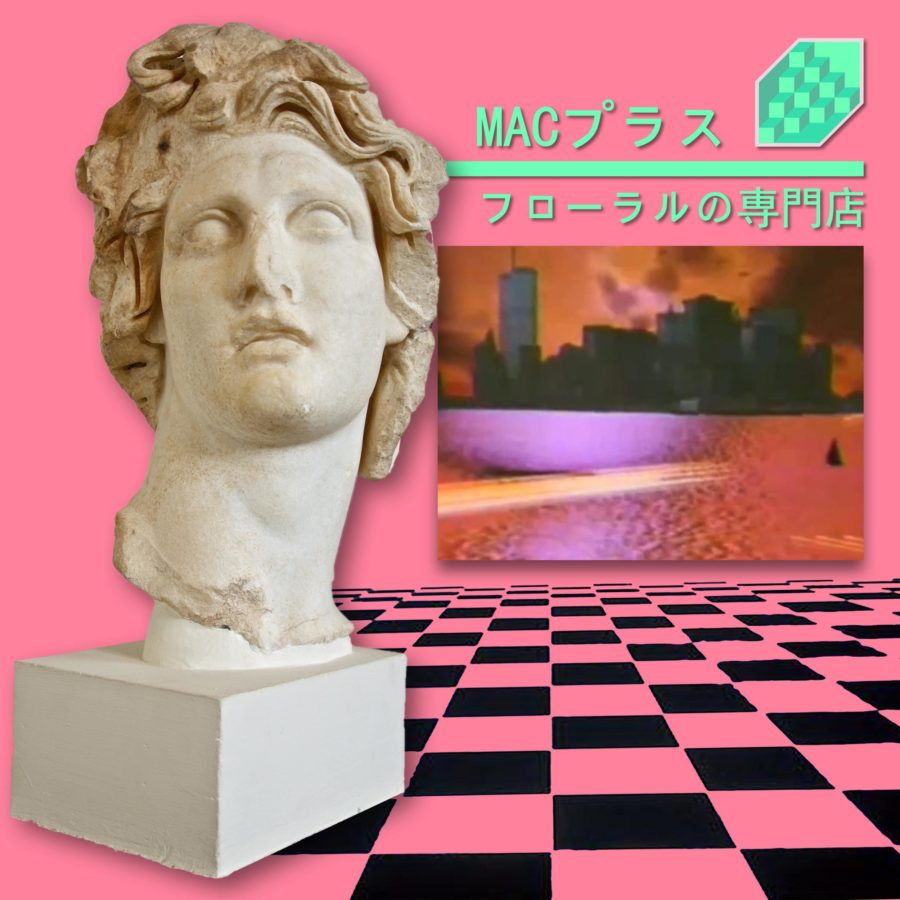Despite its ephemeral name, vaporwave music seems here to stay.
“Vaporwave is an interesting offshoot/progression of the chillwave scene,” said Jonathan Souvannavong, producer of local electronic music project ALGO AND THE RHYTHMS. “Imagine falling asleep while your ’90s era computer is booting and you have a bizarre musical adventure. Or, it’s kind of hazy, weird, kinda catchy electronic pop music.”
An electronic genre that started in 2011, vaporwave is still going strong despite the naysayers who declared it wouldn’t last this long. It has varying characteristics, but most agree on a few common themes: 1990s-era electronics, strange artistic aesthetics including statues, anime characters or video game homages, sampling other preexisting songs, sounding like mall or elevator music and oftentimes including Japanese text or voices. Songs or albums almost always feature accompanying art pieces to the tracks that fans might argue are just as important as the music they complement.
“I would describe vaporwave as a tongue-and-cheek jab at late ‘80s consumerism,” wrote local producer and sound engineer John Schaefer. “From pink Lamborghinis to sunset palm trees.”
Vaporwave is also an entirely Internet-based phenomenon, mostly shared on YouTube, Soundcloud and Bandcamp but also streamed over various “e-venues” where people can gather and listen.
In an interview with e-venue/chatroom SPF420 on gumballmag.com, curator Liz elaborated on vaporwave’s tendency to be different and do its own thing. “Vaporwave, in my opinion, is our current ‘punk scene,’” she wrote. “The digital rebels. The ones who ‘steal’ others’ music, just to manipulate it and chop it up a bit.”
Some music labels are often grouped together with the genre, even though they are not specifically vaporwave.
“KEATS//COLLECTIVE has never been a vaporwave label,” wrote founder Dan Bombard in an email interview. “Nothing against vaporwave artists, we just care not to associate our sound with the genre. My main issue with vaporwave is that I can’t tell if I’m supposed to think it’s a joke, or aesthetically ‘high-brow.’”
The label, based in Denver, Colo., is run mainly by three individuals and features over 20 artists along with various compilations. While the tags “chillwave,” “future funk” and “spacebop” may frequent their page, it is true “vaporwave” is not one of them. However, one of the label artists, Saint Pepsi – dubbed by Schaefer as “the Skrillex of vaporwave” – has released music that fans tend to shoehorn in with the genre. Even though those releases were not directly through the label, the association remains in people’s heads. Thus, there is confusion about Saint Pepsi’s true classification and the controversy rages on as purists war back and forth about whether his music fits the genre or not.
“My main rule of thumb with sample-based music is that you need to do your research,” Bombard wrote. “Having said that, I do hear vaporwave music that comes from an intelligent place. Off the top of my head, Luxury Elite, クロスMACROSS 82-89, Vektroid, Secret Attraction and Topaz Gang are some examples.”
Like any kind of music, there are renowned artists to whom fans look up and respect. One of the most famous artists of vaporwave is Macintosh Plus, an alias of the artist Vektroid. Her 2011 album release “Floral Shoppe” is practically synonymous with the genre. It is also generally considered more listenable than many similar bodies of work.
“If anything, the genre is little more than the acceptance of something too abstract to be palatable, but too interesting to be ignored,” said Santa Rosa musician Cory Oleson. “‘Floral Shoppe’ is basically My Bloody Valentine’s ‘Loveless’ of vaporwave. It is a seminal record that defines the genre.”
The album became so big that fans created spin-off memes featuring images of the bust of Greek god Helios. These are a reference to the cover art of “Floral Shoppe,” which is well-known in part to being featured on the “Internet’s Busiest Music Nerd” Anthony Fantano’s YouTube channel, “The Needle Drop.”
An album titled “Floral Shoppe 2” was released this year by the artist THE DARKEST FUTURE, alias of the artist known as D▲RKPYR▲MID. However, it sounded nothing like its namesake and instead slowed down the music beyond recognition, added different vocal samples and included the artist’s own “ragga-style” rapping.
This caused a large controversy, with many voicing their displeasure and stating that it was not “real vaporwave.” The backlash was so pronounced that D▲RKPYR▲MID issued an open letter through his Dream Catalogue label, explaining that the album was an experiment in pushing the envelope and creating something unlistenable. It all circles back to the changeability of the genre and unwillingness to color inside the lines.
“This is ultimately the next innovation in music, and people who say ‘vaporwave is dead’ are completely off base, I think,” he wrote. “I say instead that music is dead, and may vaporwave continue to live.”
For more vaporwave resources, check out www.reddit.com/r/vaporwave.


